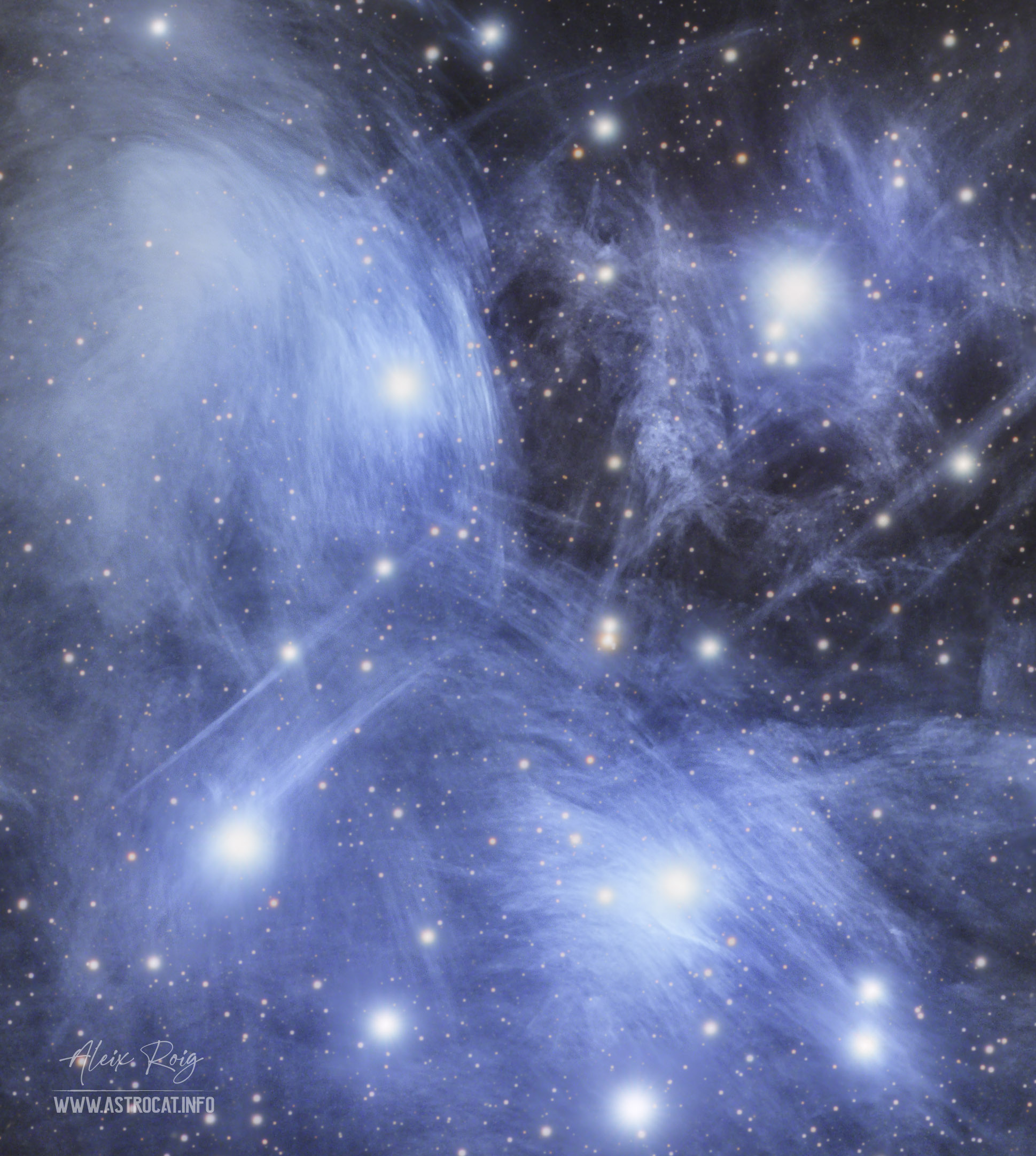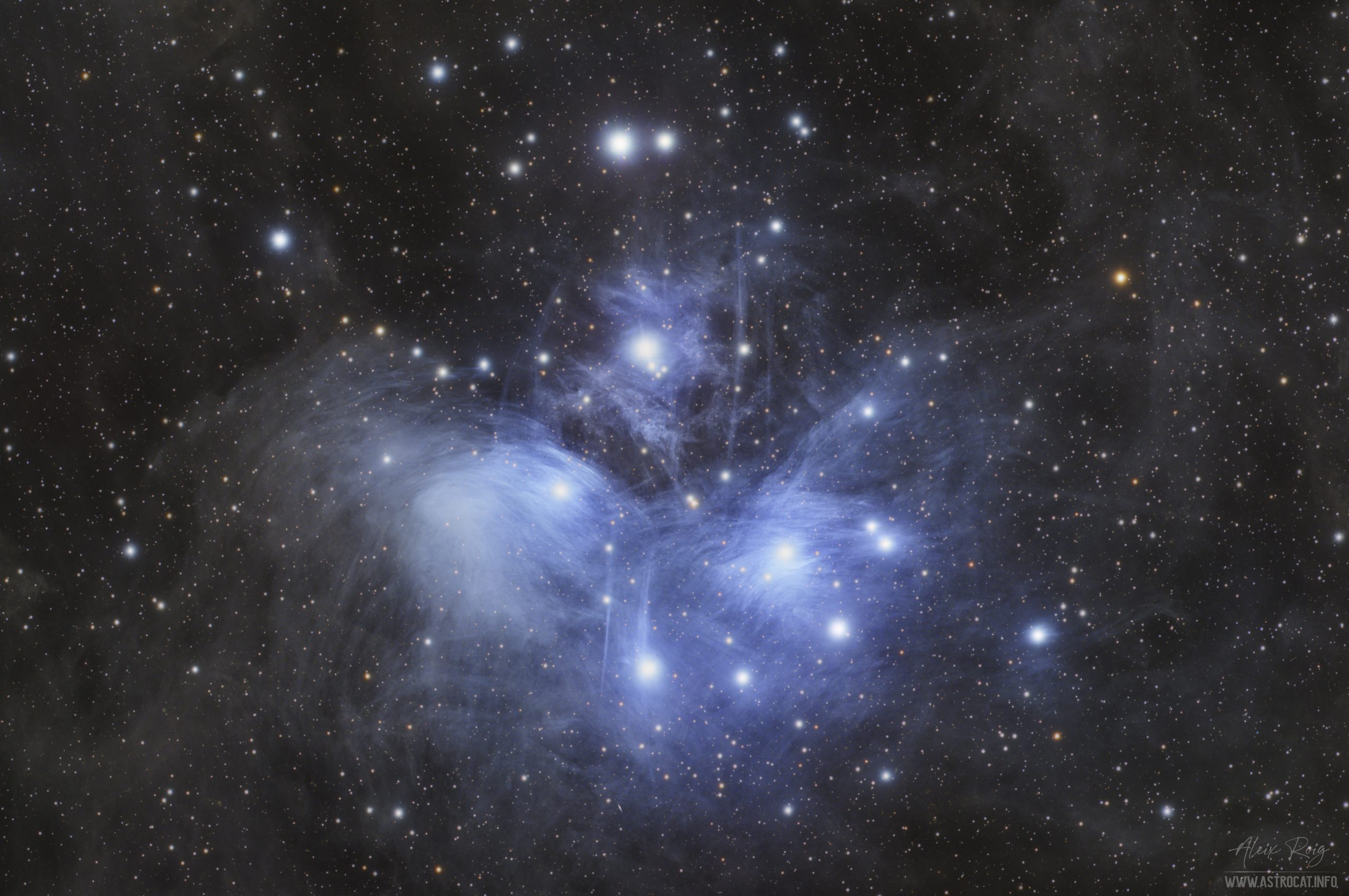The Seven Sisters, or The Pleiades (Messier 45), is one of those celestial objects that most people can recognize in the autumn and winter northern night sky. Easily distinguishable at naked eye in the Taurus constellation, this star cluster shows its Seven Sisters only when being observed under a very dark sky and with good ocular skills.
This open star cluster is one of the nearest from us, around 400 light years away. It is surrounded by huge amounts of dust from a reflection nebula. It is very young, and the first stars started to be born around 100 million years ago. It’s very hot and most of the stars are B-type, one of the hottest stars known.
This image is a LRGB combination captured from my backyard observatory in Prades with my new Takahashi FSQ106 EDX4. Due to its reflection nebula, a good way to catch all the faint detail that surrounds the open cluster is to use broadband filters during the darkest nights of the month.
Image Details
L: 96×300″
RGB: (15;12;12)x300″
All images at -10ºC bin1
Calibrated with 25 flats, 30 darks, 30 dark-flats
Total exposure: 11h15′
Average darkness: 21 mag/arcsec2
Image resolution: 1.46”/pixel
FOV: 2.54ºx1.7º
Equipment
FSQ106EDX4 telescope
Mesu200 mount
ASI2600MM Pro camera with ZWO EFW 7 pos
Guiding with ASI120MM and ZWO Mini Guide Scope
Astrodon LRGB filters
Software
SGP, PHD2, APP, PIX, LR, PS, TPZ.
Aleix Roig – Prades, Tarragona (Catalonia, Spain), November 2021.
See an HD view on Astrobin: https://www.astrobin.com/hpq91i/
See this recent image of M45 in a wide field DSLR image with all the IFN around the open cluster.



